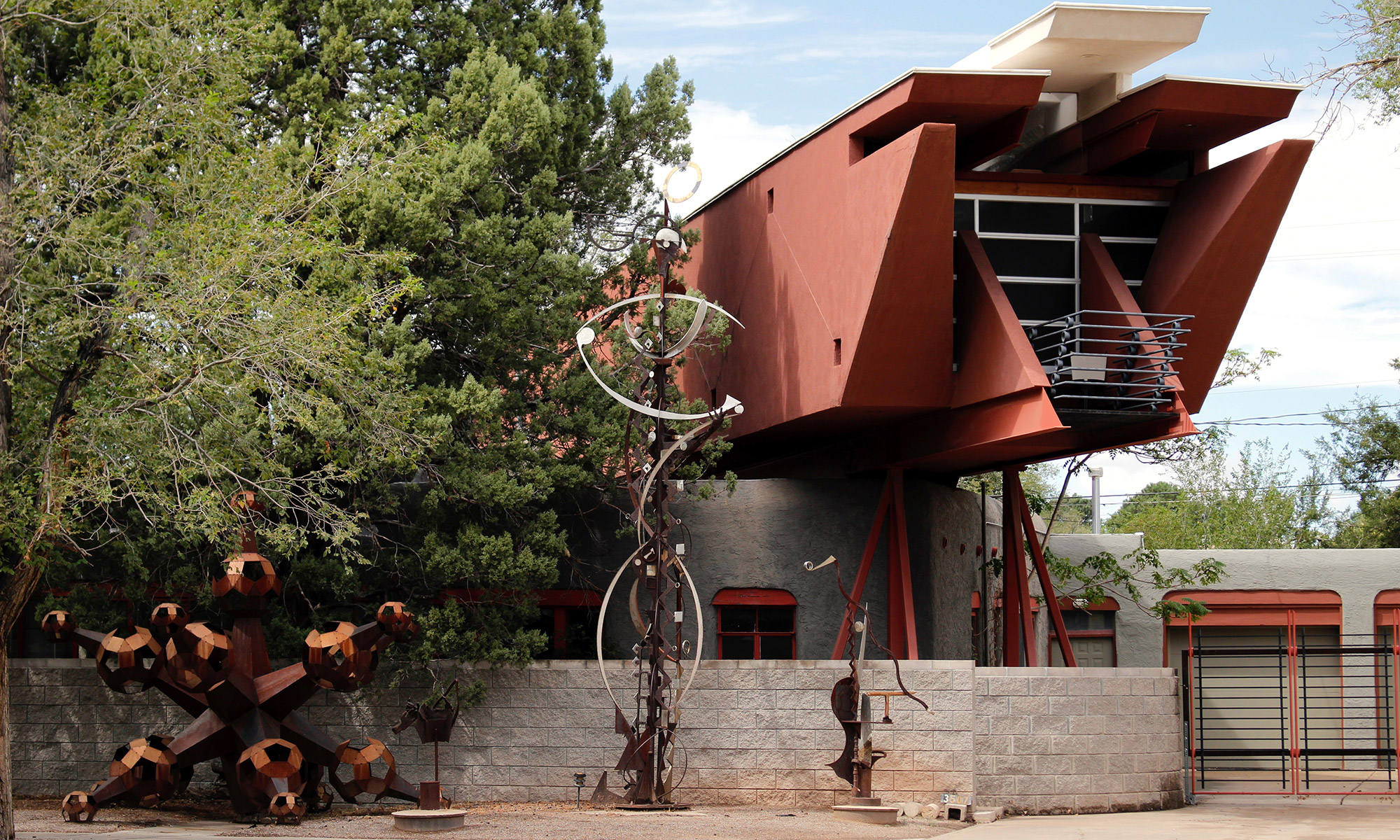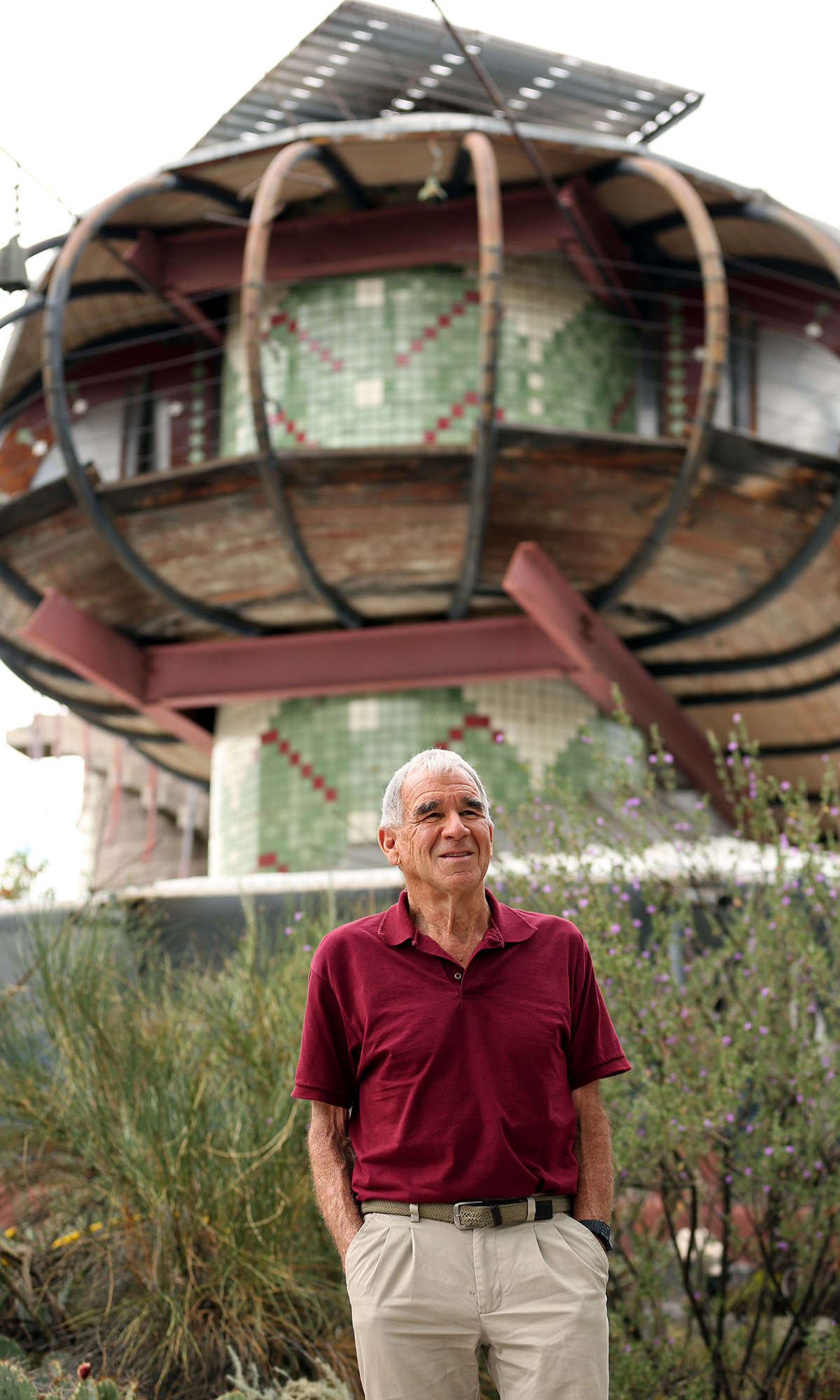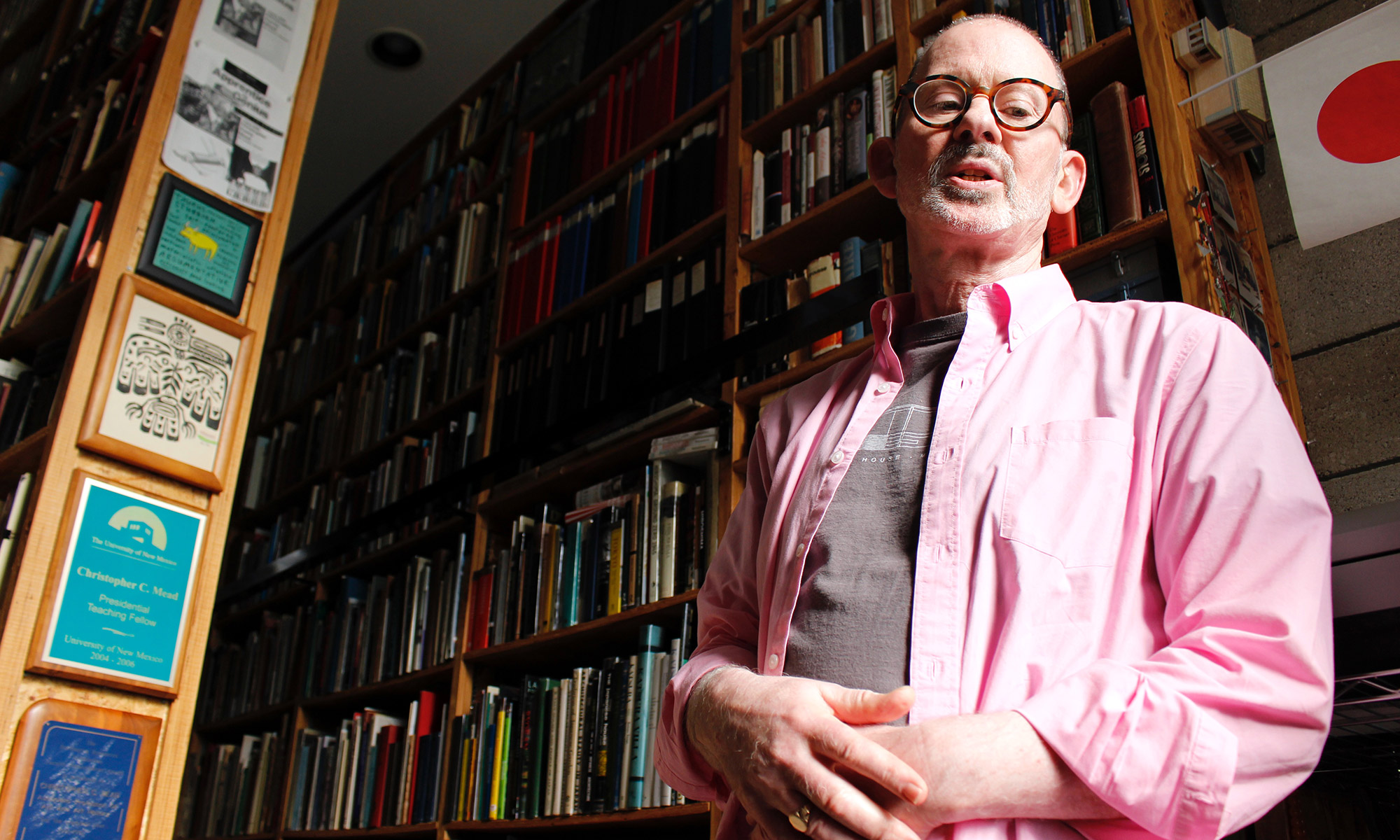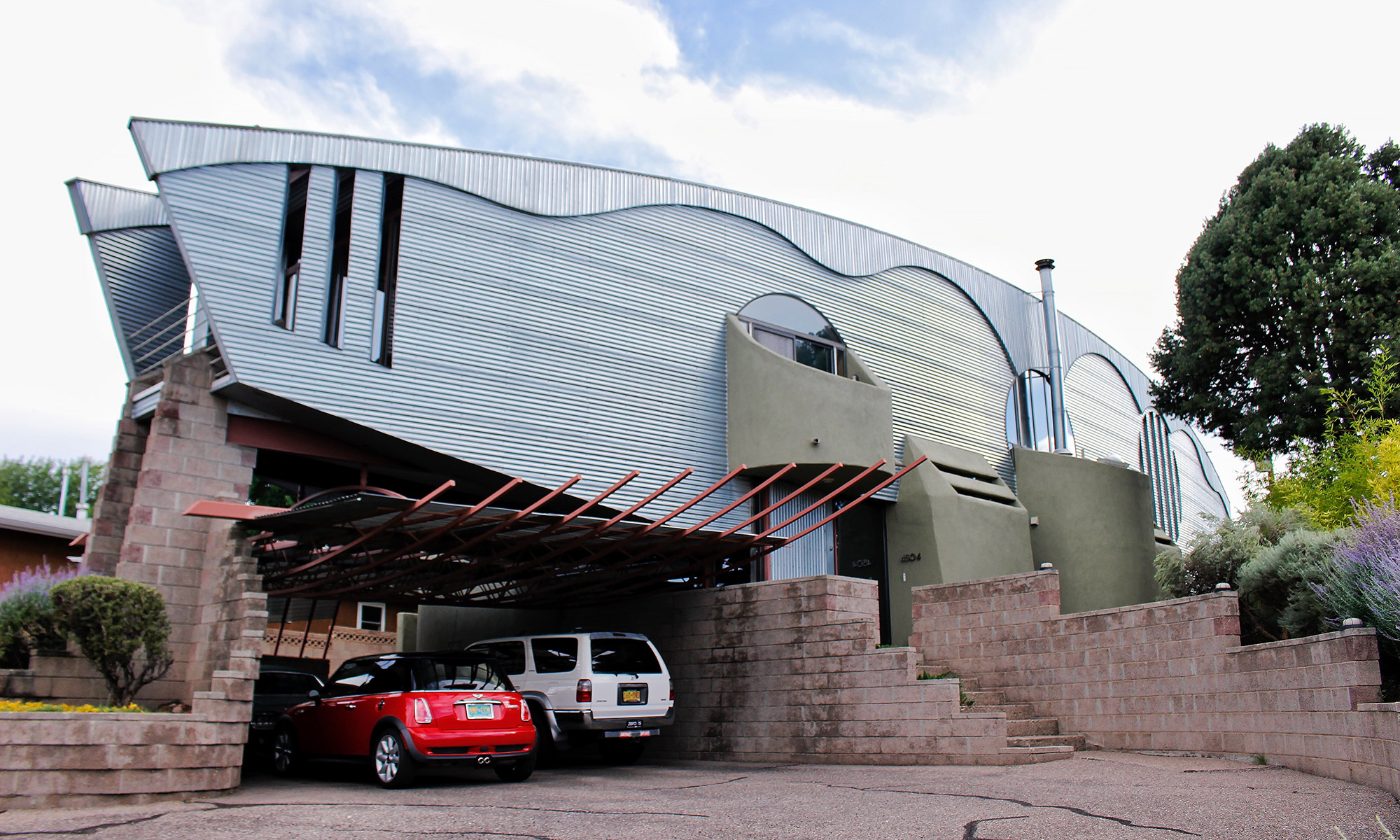By Ron Stauffer
ALBUQUERQUE, N.M. — For five decades, architect Bart Prince has been told time and again, “You can’t do that.” This has never given him a moment’s pause.
Prince is known internationally for designing large buildings with strange shapes, complex angles, and a disregard for the traditional Adobe style that has defined New Mexico architecture.
He intentionally avoids the brown stucco and Adobe look distinctive to the Southwest. His dislike of the style goes back to his childhood.
Prince spent time each summer at his grandparents’ home in Santa Fe. His grandfather was the son of LeBaron Bradford Prince (governor of the New Mexico Territory from 1889 to 1893), and lived in a historic Adobe home.
“I can still remember feeling like the houses where my family members lived, all Adobe and stone, were these creepy, dark places. I thought, ‘Why are people living in these?’” Prince says.
The Santa Fe style comes from a specific place in time, and the materials used were chosen simply because that’s what was available, Prince says. It doesn’t make sense today.
“I could see why the Indians lived in these homes. But I felt like we ought to be doing the same building for ourselves, in our time, not imitating something else,” he says.
Prince’s home designs look futuristic, space-age, even whimsical. He uses uncommon building materials, including cork, wine bottles, black steel pipes, and copper sheet metal.

He insists he doesn’t choose bizarre materials to make a point. He just uses the right material for the particular design of each home. At his personal residence, which he designed and built himself, he used a selection of unusual materials. His front door has embedded glass ashtrays to let in light while still offering privacy.
With every home project, he’s been told “no” by someone at some point along the process. His initial drawings are often rejected by homeowners’ associations, design review boards, and locals who walk past his homes and are not afraid to state their opinions.
“It doesn’t matter. They can say whatever they want. You do get some people that are just nasty. Neighbors, mostly. But for the most part, they just don’t understand. I don’t blame them necessarily,” Prince explains.

No matter the challenge or resistance, he finds a way to keep moving forward.
“I’ve never had one [home] where it didn’t get built the way I wanted it,” he says.
Prince knew from his first few days of classes in college that his sense of design would get pushback. At Arizona State University, where he earned a bachelor’s degree in architecture, the faculty appreciated his work ethic but often challenged him.
“In school, they thought I was wild. But they couldn’t say no, because I was such a busy guy. If a problem they gave required one drawing, I did ten. If it required one model, I did four,” Prince remembers.
Architectural styles are hard to define, so while Prince is proud to say he is “rebelling against” the traditional New Mexico style, he refuses to admit that he has his own style.
“I don’t really believe in ‘style.’ What I believe in, is [with] each building, you start over again. You’re responding to a new client, a new site and climate. Everything is different. So I don’t know what I’m going to do until I get there,” he says.
Many of his homes don’t even look like homes. Their unusual size, shape, and color make them resemble objects like airplanes, caterpillars, and snails. This results in their eventually collecting nicknames from the public.
His own design studio where he lives and works is called “the Spaceship” by neighbors and the visitors who stop in front of the home to take selfies.
Sometimes his designs have caused public controversy. A commercial office building Prince designed in the early 1970s (which has since been torn down) gained unflattering attention from the local news media.
“Some people called it an aircraft carrier. Others nicknamed it ‘Jaws’ because it had all these triangular windows, and the newspapers would say ‘Kids are afraid to go by it on their way to school,’” he recalls.
He has become immune to criticism about his work.
“It doesn’t matter. They can say whatever they want. I got used to that pretty early on,” Prince says.
Not all the attention has been negative. In fact, one subject-matter expert liked Prince’s designs so much that he wanted his own Bart Prince home.
Christopher Mead, Ph.D., a now-retired professor of architecture and art history at the University of New Mexico in Albuquerque, first discovered Prince’s work after moving to Albuquerque in 1980. His friends told him he had to “go see those weird houses” in the area.

Mead has written two books on Prince’s architecture, and lives with his wife, Michele Penhall, in a home that Prince designed.
As the home was being built, Mead was teaching at the university so he invited students to come to the job site and watch the process unfold.
“I learned a lot too,” Mead says. “The best way to learn about it is to watch. And I was my own student, and learned the whole process of construction.”
Some of Mead’s friends and colleagues wondered why he didn’t choose a more historical home design style.
“People told me ‘You’re a historian. This is New Mexico. Why don’t you do a Spanish Colonial [or] Adobe kind of style?’” Mead says.
Mead rejects the assertion that being historical means choosing an ancient home style.
“[Prince] is a New Mexican architect. He’s just as authentic as anybody else. He’s practicing architecture now. This is a way to be historical,” Mead claims.
Towering eight feet above the other houses on the block, the Mead-Penhall residence sticks out with its green stucco and corrugated sheet metal walls. Oriented diagonally on the lot, the home is 100 feet long and looks like a submarine resting on brick stilts.
Surprisingly, the home was built without any variances to the local building code. Mead used his home as an example of how to build a house imaginatively without needing special permission or deviating from standard building practices.

“Look at my house,” Mead told his students as it was being built. “My house is built to code, and it doesn’t look like the house next door. That shouldn’t be possible unless you assume that code looks like something.”
At 71, Prince is still designing homes, in addition to the time he spends speaking across the country and abroad. He has lectured at Yale University, Columbia University, and internationally in France and Australia.
He has received multiple design awards, including the International Excellence in Design Award, and three Architectural Record House of the Year Awards.
If he hadn’t chosen to pursue architecture, he would most likely be a musical composer. He views the art form as similar to architecture. “It’s the same thought process. Just a different medium,” he says.
His favorite musical composer is Claude Debussy. Like the French composer, Prince has eschewed traditional style, rejected norms, broken established rules, and received his fair share of criticism and acclaim in the process.